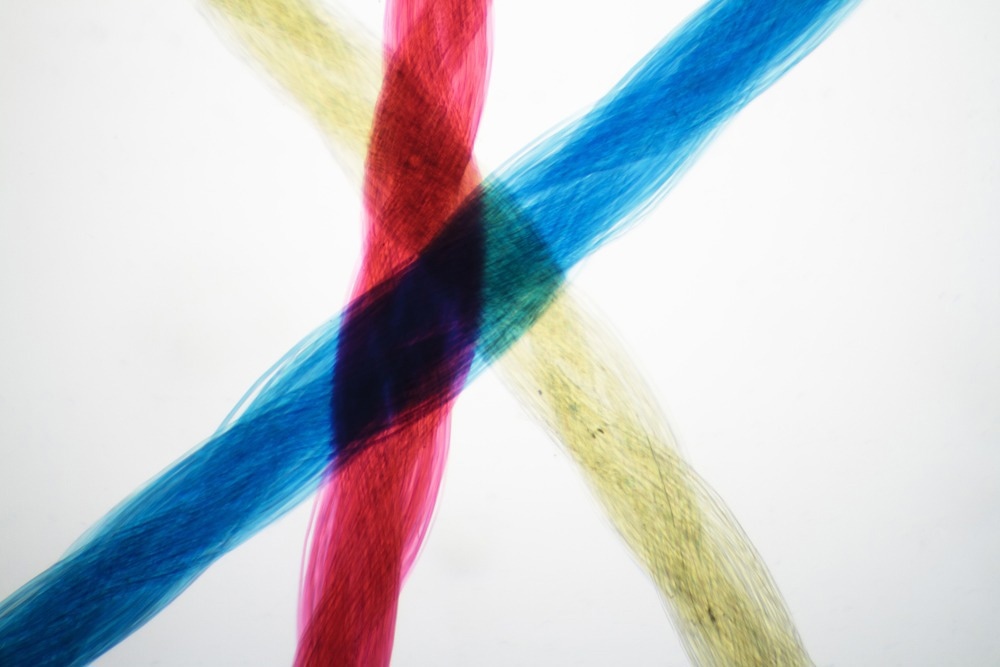Scientists from Donghua University in Shanghai’s College of Materials Science and Engineering have presented a comprehensive and timely review of the uses of silk fibroin as a biomaterial. Their findings have appeared online in a pre-proof paper in the journal Materials Today Bio.

Study: Bioinspired silk fibroin materials: From silk building blocks extraction and reconstruction to advanced biomedical applications. Image Credit: ggw/Shutterstock.com
Silkworm Silk
Silkworm silk has been used as a material in the textiles, clothing, furnishing, and decorative industries for several thousand years. Its widespread use in these sectors is due to its aesthetic properties, high strength, lightweight nature, and flexibility. Large-scale breeding of silkworms is convenient, and silk can be produced rapidly in large volumes, making the synthesis process extremely scalable and commercially viable.
Aside from its usefulness in the aforementioned industries, silkworm silk has become an incredibly attractive biomaterial for biomedical applications such as surgical sutures. Its use as a biomaterial is made possible by its high degree of biocompatibility, non-toxicity, and biodegradability. Indeed, based on reported performance, the US FDA has approved the use of degummed silkworm silk.
Silk Fibroin
The structure of silkworm silk is comprised of a silk fibroin core with a silk sericin outer shell. Silkworm silk itself is not entirely suitable for some biomaterial applications due to the presence of silk sericin, with research indicating that devices composed of this biomaterial are hindered by host immune system rejection. Studies have concluded that silk sericin is responsible for this reaction.
Removing the sericin from silk is therefore essential to overcome the current limitations with this useful biomaterial. Doing so significantly reduces the immunogenicity of devices and structures made from silkworm silk. Indeed, several studies have indicated that silk fibroin produced by degumming and regeneration methods exhibits comparable biocompatibility and cytocompatibility to commercial biomaterials such as PLA and collagen.
Silk fibroin is a hierarchical-structured protein fiber with fixed diameters. So far, research has faced challenges with directly preparing degummed silk fibroin-based materials for uses, except in limited fields such as textiles. A promising strategy to overcome these limitations is to prepare reconstructed silk fibroin fibers with formats such as hydrogels, electrospun mats, and 3D porous scaffolds.
Using this indirect approach, which is inspired by biological structures, the processability of silk fibroin-based biomaterials can be enhanced. Moreover, these materials can be combined with other biomaterials to produce functional biocomposites for a diverse range of applications. Several studies have explored this approach.
The Study
The new review in Materials Today Bio provides an overview of bottom-up and top-down strategies for the synthesis of reconstructed silk fibroin biomaterials. Previous studies by the authors have revealed that spontaneous nanofibers form microfibers in reconstructed silk fibroin. These nanofibers are composed of silk nanoribbons.
In the first section of the review, fabrication methods for silk fibroin and related oxidation processes are discussed. Several novel extraction processes have been developed in recent years which partially retain silk’s original hierarchical structures. Amongst the various methods available to enhance the building blocks’ suspension is the oxidization of corresponding products such as hydroxymethyl into carboxyl groups.
The second section explores recent innovative advances in this field. Several approaches have been investigated in the past few years by multiple research teams for the controllable fabrication of functional recovered silk fibroin materials from their silkworm silk building blocks. Amongst these processes, common methods for inducing crystal structures are water vapor annealing and immersion in alcohol.
Alcohol-based methods are simple and fast, with both ethanol and methanol solvents widely employed in current research. If chemicals such as growth factors need to be incorporated into silk fibroin, water vapor annealing is beneficial. One innovative method to prepare silk fibroin fibers developed in recent years employs a microfluidic chip, which spins the fibers in a biomimetic process inspired by the silkworm’s spinning gland.
The review then highlights innovative biomedical applications for silk fibroin fibers. Specific focus has been placed on soft tissue engineering, cell-material interactions, and flexible bioelectronics. This biomaterial has been explored for applications such as organ regeneration, nerve regeneration, stents, surgical sutures, biodegradable health monitoring electronics, and biodegradable device elements such as conductive wires.
Finally, current challenges and future prospects for this field of material science research have been comprehensively discussed by the authors. These include novel strategies for the development of extraction methods for bioinspired building blocks, bioinspired silk fibroin materials modification strategies, and approaches that combine novel technologies.
In Summary
This field of materials science is still in its relative infancy, with exciting progress made over recent years in the development of biomaterials and bioinspired structures and medical devices from silk fibroin. The review paper has provided scientists working in the field with a wealth of relevant information as well as current and future perspectives.
More from AZoM: How Can Polymer Strips Be Used to Clean Up Oil Spills?
Further Reading
Yao, X et al. (2022) Bioinspired silk fibroin materials: From silk building blocks extraction and reconstruction to advanced biomedical applications Materials Bio Today 100381 [online] sciencedirect.com. Available at: https://www.sciencedirect.com/science/article/pii/S259000642200179X
Disclaimer: The views expressed here are those of the author expressed in their private capacity and do not necessarily represent the views of AZoM.com Limited T/A AZoNetwork the owner and operator of this website. This disclaimer forms part of the Terms and conditions of use of this website.